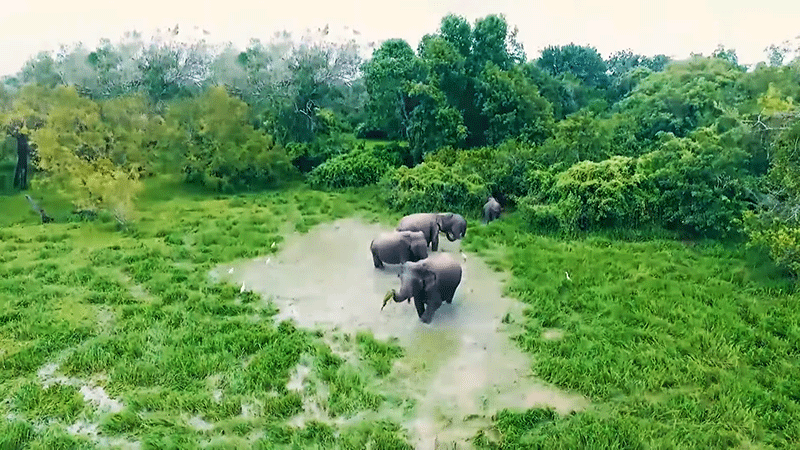Sydney Morning Herald Australia says “MUST VISIT SRI LANKA”
According to the Travellers magazine of Sydney morning herald, Australia, Travellers must visit Sri Lanka. The magazine lays out many reasons why Sri Lanka should be on the bucket list of every traveller.
Table of Contents
- 5 Must visit Sri Lanka places
- Yala national park
- Kandy
- Visit Sri Lanka-Anuradhapura
- Visit Sri Lanka and undertake Sri Lanka cultural triangle tout
- Visit Sri Lanka Galle fort
- Visit Sri Lanka Sigiriya rock fortress
According to the travellers magazine of Sydney morning herald, Australia, Travellers must visit Sri Lanka. The magazine lays out many reasons why Sri Lanka should be in the bucket list of every travellers.
According to Lee Tulloch of Sydney Morning Herald Magazine, Sri Lanka is a hot destination and provides great pleasure for travellers. She has chosen five hot travel destinations on the island, namely; Yala national park, Sigiriya rock fortress, Kandy, Anuradhapura and Galle Fort. She is also doing a brief recap on the collapse of the tourism industry over the last few years starting from Tsunami in 2004 to political unrest in 2022. In this article, we discuss in detail the 5 places that are highlighted in the Sydney Morning Herald Travellers magazine.
5 Must visit Sri Lanka places
- Yala national park
- Kandy
- Galle fort
- Sigiriya rock
- Anuradhapura
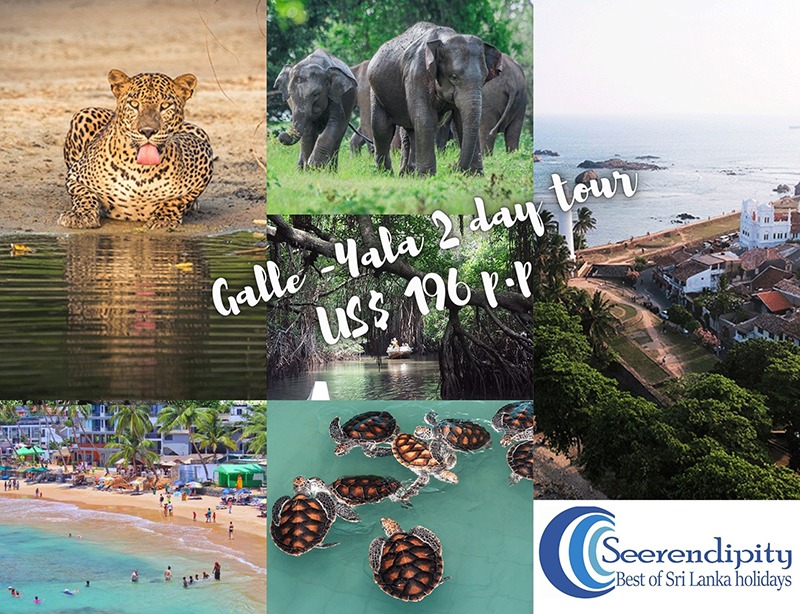
Yala national park
Sydney morning herald Traveller magazine names Yala as one of the main places to see on your visit to Sri Lanka. Yala National Park or Ruhuna Public Park is situated in the southeastern area of Sri Lanka and reaches out to more than two territories of the Hambantota region of the southern territory and the Monaragala area in the Uva region. The entry to the national park is at Palatupana, 12km from Kirinda. The distance from Colombo to the entrance point of Palatupana is 305 km. Yala national park is considered one best places for wildlife tours in Sri Lanka and is included in most Sri Lanka nature tours.
How to reach Yala national park
The doorway to Yala National Park is Tissamaharama. A 20 km drive from Kirinda takes the guests to Palatupana. Being situated in one of the parched locales of Sri Lanka, the Environment of Ruhuna National Park is typically hot and dry. The mean yearly temperature is 27 Celsius, albeit in the dry season the temperature could go as high as 37 Celsius. The rough outcrops dispersed over the large area give the travellers an opportunity to experience the typical Sri Lankan setting.
Natural life
Out of two dozen national parks in sri Lanka, Yala National Park offers the most obvious opportunity to observe Sri Lanka’s expansive assortment of natural life: brilliantly painted storks are seen roosting at the shores of lakes and water holes, where the crocodiles also have decided to nap off; exquisite fan-tailed peacocks in their dazzling blues and greens march about in the midst of the forest where monkeys hang, jump and babble; in the shrubbery wilderness are the Elephants; check the tracks and straying into the thick jungle in search of the rare black panther.
About 32 types of warm-blooded creatures have been recorded at Yala national park. The undermined species incorporate sloth bear (Melursus ursinus), Panther (Panthera pardus kotiya), elephant (Elephas maximus), water bison (Bubalus bubalis), Wild hog (Sus scrofa), spotted deer (Pivot hub ceylonessis), sambar (Cervus unicolor) and brilliant jackal (Canis aureus).
Leopard
Sri Lankan leopard (Panthera Pardus Kotiya) are supposed to be a particular sub-animal categories from their Indian neighbors. Leopards should be visible in all parts of the forest, however, the best period for spotting panthers is from January to July.
Yala National Park’s Block 1, on the western side of the forest, the only one of each of the five blocks open to the guests, has recorded the highest number of leopard concentrations in a national park of its size in the world, with 100-125 leopards. A large number of jeeps and tourists enter the Yala national park every day and therefore, the leopards are somewhat familiar with the jeeps and human presence within its territory. The leopards are wandering in all parts of the jungle during the daytime and they can be witnessed on roads, amidst the shrubs, on rocks and nearby lakes and waterholes.
Elephants
Lunugamvehera National Park sandwiches between Yala National Park and Udawalawe national park, and it functions as a passage between Yala and Udawalawe National Park. Yala is home to an extensive populace of elephants which fluctuates occasionally. The dry time of May to August is the best time to see elephants in the national park.
Birdlife
Yala National Park is rich in birdlife and around 130 species have been recorded in the national park. Raptors incorporate peaked snake falcon and white bellied ocean hawk. Among the water birds that can be witnessed along the shoreline of the lakes are Lesser Flamingo, Pelican, Spoonbill, painted stork, interesting dark necked Stork, dim heron, purple heron, night heron and Darter.
During the north-east monsoon, the lakes in the national park are visited by a large number of waterfowl, including Pintail, Garganey, Eurasian Curlew, Whimbrel and turn stone, which blends in with the occupants, for example, whistling duck, Yellow Wattled Lapwing, Red Wattled Lapwing and Extraordinary Stone Plover. The thick forest is home to Orange Breasted Green Pigeon, Hornbills, and Flycatchers, including Asian Heaven Flycatchers, Barbets and Orioles.
Yala National Park Entrances
The travellers can enter the national park mainly through three main gates as follow,
- Katagamuwa Entry [Gate 1]
- Palatupana Entry [Gate 2]
- Galge Entry [Gate 3 and 4] Sigiriya rock fortress
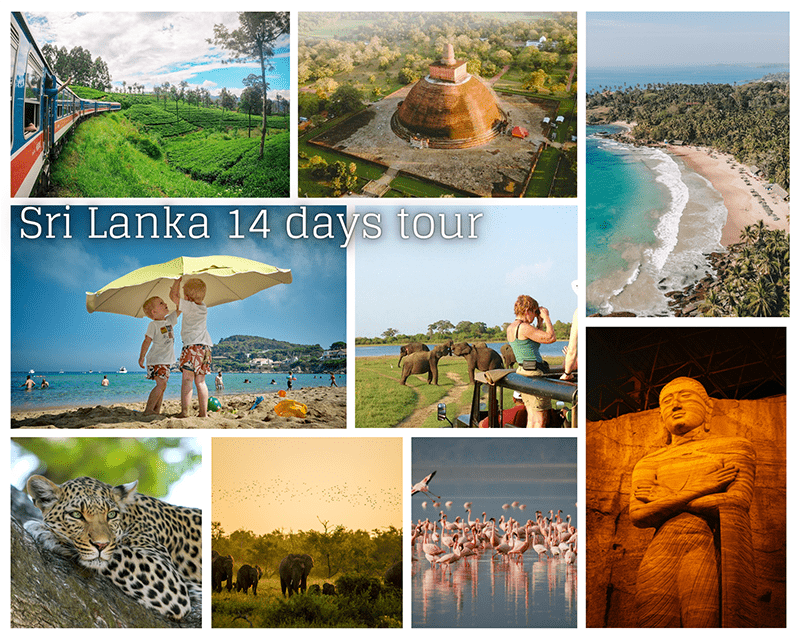
Kandy
It is the fourth-biggest city on the island and the capital of the central province of Sri Lanka. Its geographical location has made it a significant transportation hub on the island: while Kandy is the doorway to the hill country of Sri Lanka, the city can be reached using many highways, which are coming from various parts of Sri Lanka. Sri Lanka hill country rail line that starts from Colombo, near the seaport on the western coast runs through Kandy to the farthest place of Badulla in the Sri Lanka hill country. The Colombo-Kandy main road better known as A1 road and Kandy-Nuwara Eliya are two of the most important roads in Sri Lanka and it cuts through kandy; Colombo-Kandy road goes through the tea estates and rice paddies, Kandy-Nuwara Eliya road slices through paddy fields and consistent tea ranches. The two roads paw their direction up twisting, adjusting over the rings of slopes.
What to see in Kandy
Kandy is the last kingdom of the Sri Lankan monarchy with a pleasant scene encompassed by lovely mountains situated in the hill country of the island at an elevation of 1,600 feet over the MSL-Mean Ocean Level. Kandy is an important city, which hosts the most sacred Buddhist temple in Sri Lanka, the tooth relic temple.
Kandy is also the home to the largest botanical garden in Sri Lanka, Peradeniya botanical garden with more than 4,000 trees, plants, veins, orchids and many other flora species. The botanical garden was established under British rule in sri Lanka. Taking into account these realities UNESCO proclaimed Kandy as an UNESCO World heritage site.
Today Kandy is the second most renowned city in Sri Lanka with an area of 1,940 SQ KM. Kandy offers many dozens of interesting places to visit from wildlief reserves too, botanical gardens, tea plantations, waterfalls, temples and many more. Therefore, Kandy is a popular holiday destination in Sri Lanka and is visited by many thousand travellers every day. Especially, Kandy has a vibrant culture backed by many ethnic groups such as Sinhalese, Tamil, and Muslim. Sri Dalada Maligawa or the temple of the tooth relic is the temple, where the sacred left eye tooth of Buddha is deposited and it was the royal palace of the former King.
Kandy Esala Ceremony
During the month of August Kandy turns out to be exceptionally packed because of the Kandy Esala Perehera which is conducted as a yearly ritual of the tooth relic. The Esala pageant lasts for 10 days, the event attracts more than 600000 spectators from various parts of the world. The annual event renews the esteem custom, traditions and Buddhist legacy. The final pageant of the Esala ceremony is participated by more than 50 elephants alongside vivid Kandyan artists and drummers.
Kandy Lake
Your tour to Kandy won’t be finished without a visit around the enchanting lake of Kandy. It is one of the most captivating part of the city tour, which was constructed by the King Sri Wikrama Rajasinghe in 1806. By taking into account these reasons UNESCO proclaimed this city as a world heritage site under the name of Sacrosanct City of Kandy.
The Historical backdrop of Kandy
Kandy was the last kingdom of the Sinhalese monarchy until it was ceded to the British crown. The city was captured and administered by the English since 1815. King Wickramabahu’s name is kept in history as laying out Kandy who built the royal residence with the guidance of Brahmin. Sena Sammata Wikramabahu was the main King of Kandy while the last ruler was Sri Wikrama Rajasinha who was caught and taken as an imperial prisoner by the English. The name Kandy came from the term Kanda which implies Mountain. Most local people call this enchanting city Mahanuwara which implies Extraordinary City. Kandy was once named Senkadagalapura. It was named so after a plain named Senkada.
The tooth relic of Buddha
This extraordinary city is situated in the central mountain of Sri Lanka, it was a difficult task for unfamiliar trespassers to enter the Kandyan kingdom in the past, especially from the low country of Sri Lanka. Kandy is surrounded by a network of mountain and forested areas, which gives the city natural protection against intruders. Owing to this natural protection, the guerilla army of the King of Kandy was able to maintain its independence for a long time despite the many attempts of the Portuguese and Dutch to conquer it.
Kandy was independent and made and improved its own autonomous culture, occupation, customs, workmanship and design. Kandy gave a safe house to the remnant of the tooth of the Buddha as the last kingdom of the country. It was a crucial custom and obligation of the leader of the country to safeguard the sacred tooth. therefore, it was standard practice of the ancient kings to build the tooth relic temple next to the royal palace.
The Magnificence of Kandy
Kandy is surrounded by a network of mountains and the city lies in a plateau. The surrounding area of Kandy harbours many interesting places such as lakes, rivers, waterfalls, mountains, and valleys which is the reason most travellers say that Kandy is an astounding holiday destination in Sri Lanka. Flaunting a rich legacy, Kandy is loaded with treat for voyagers searching for social and natural sights.
Numerous travellers from all over the world visit this heritage site to investigate its wonderful past, witness the magnificence of nature, and untamed wildlife and get a firsthand encounter with its cool climatic circumstances. Since the last kingdom of Sri Lanka, most monuments in the city are well preserved. Kandy is the best preserved ancient city compared to most other ancient sites found in the cultural triangle of Sri Lanka such as Anuradhapura and Polonnaruwa.
In addition to that Kandy is one of the country’s most significant cities with a connection to Buddhism. The city of Kandy gives you plenty of opportunities to engage in many interesting activities such as trekking, hiking, visitng national parks etc. The city likewise offers opportunities to explore a fascinating array of fauna and flora in the hill country.
Some of the important places to see in Kandy
- The sacred city of Kandy – UNESCO World Legacy
- Sri Dalada Maligawa or the temple of the Tooth relic
- The Kandy Esala Perahara – The lavish night march
- The Lake of Kandy
- The renowned Peradeniya Botanical Graden
- Lankathilake temple – Antiquated Sinhalese temple
- Gadaladeniya temple – Antiquated Sinhalese temple
- Pinnawela Elephant orphanage
- Mahaweli river
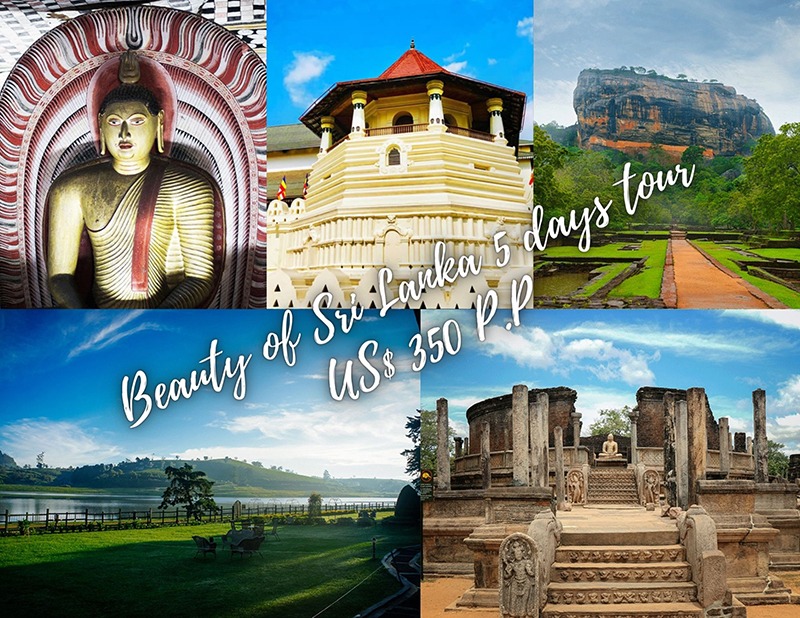
Visit Sri Lanka-Anuradhapura
According to Sydney Morning Herald Traveller magazine, Anuradhapura is an important place to see as you visit Sri Lanka. Anuradhapura is a significant city situated in north central province of Sri Lanka. It is the capital city of north central Region Sri Lanka and the capital of Anuradhapura Area. The city lies 205 km (127 mi) north of Colombo, on the banks of the noteworthy Malwathu River. The city is presently a World Heritage Site renowned for its very much saved vestiges of the old Sinhalese human culture.
History of Anuradhapura
While Mahavamsa place the establishment of the city in 437 BCE, however, archaeologists opine that the city was occupied by humans many centuries before that. With human occupation for more than 3 millennia, Anuradhapura is considered one of the oldest continuously occupied cities in the world.
It thrived on agriculture, and the ancient city developed with the support of the Water-driven Sinhalese civilization, Theravada Buddhism. Anuradhapura is the longest-serving antiquated capital of Sri Lanka that has made due for quite some time. Additionally, It was the primary capital of the Sinhalese kings of Rajarata, following the kingdom of Tambapanni and Upatissa Nuwara. Anuradhapura was likewise the centre of Theravada Buddhism for a long time. Anuradhapura played a significant role in the development of Buddhism on the island. The travllers can witness remnants of numerous old Buddhist monasteries in the city, including the well-known Mahāvihāra and the Jaya Sri Maha Bodhi, the oldest documented tree in the world dating back to the 2nd century BC. Sri Maha Bodhi is a sapling of Bo-tree, under which Buddha became enlightened in Bodhgaya, India. The ancient structures dotted the ancient and ancient city occupying about 40sq km.
Downfall of Anuradhapura
The city was generally obliterated to a great extent after it was abandoned after 993 CE, with the Cholar attack from South India. Albeit a few endeavours were made by later Sinhalese rulers to restore the glory of Anuradhapura, it was not possible due to the endless south Indian invasions. Later the abundant city was unearthed by the colonial rulers, mainly the British rulers in the nineteenth century CE.
The modern city of Anuradhapura
The restoration of the historical city started during the 1870s. The modern city, a lot of which was moved during the mid-twentieth to save the site of the old capital, is a modern city with a well-developed road network and it sits along the main railway line. The city is the central command of Sri Lanka’s archaeological study, and the travel industry is a critical considers its economy.
Visit Sri Lanka and undertake Sri Lanka cultural triangle tout
Undertaking a Sri Lanka cultural triangle tour is the best way to explore this fascinating ancient city along with many other historical and cultural hot spots in the island. A trip to Anuradhapura can also book as a standalone activity from Colombo and many other resorts in Sri Lanka. Sri Lanka cultural triangle tour is available in many variations. It can be booed as a one-day Sri Lanka tour, 2 days Sri Lanka trip, 3 days Sri Lanka trip or 4 days cultural triangle tour.
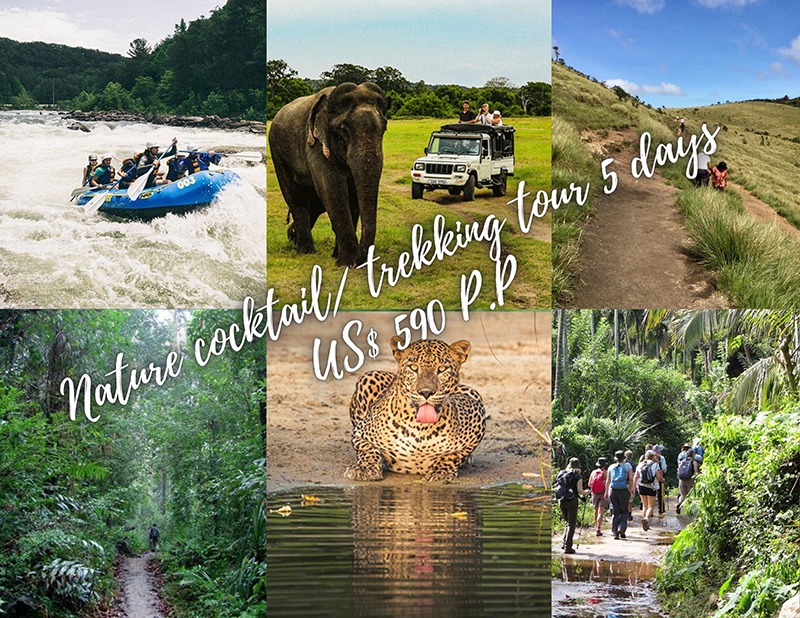
Visit Sri Lanka Galle fort
Visitng Sri Lanka galle fort is on the bucket list of most travellers in sri Lanka. Galle Fort, in the city of Galle on the southwest shoreline of Sri Lanka, was constructed first in 1588 by the Portuguese, and then it was widened and fortified by the Dutch during the 17th century. The Dutch administrators occupied the fort from 1649 onwards until 1796. Galle is a verifiable, archaeological and engineering landmark, which even after over 432 years keeps a clean appearance, because of broad remaking work done by the Archeological Department of Sri Lanka.
The Galle Fort has a brilliant history, and today it has a multi-ethnic and multi-cultural population. This centuries-old Fort is home to many hundreds of ancient houses, palaces, churches, temples, prison quarters and storage complexes. The historical value of the fortified city has been perceived by the UNESCO and the site has been recorded as a UNESCO world heritage site, for its remarkable composition of “a metropolitan outfit which outlines the collaboration of European design and South Asian customs from the sixteenth to the nineteenth centuries.”
The Galle Fort also called the Dutch Fort or the “Rampart of Galle”, endured the tsunami in 2004, which harmed a piece of the beachfront region of Galle town. It has since been restored.
History of Galle Fort
Galle’s earliest verifiable presence is traced to Ptolemy’s world map in 125-150 CE, When it was a bustling port, exchanging goods among the ancient traders from Greece, Arabian countries, China and others. Its notice as a “port of call of the Levant” is made in the cosmography of Cosmas Indicopleustes.
Portuguese in Galle
Portuguese, under the authority of Lourenço de Almeida, made their first appearance in 1505 in Galle of southern Sri Lanka and caused a prominent change in improvements on the island with their dear fellowship with the King Dharmaparakrama Bahu (1484-1514), the then King of the country. Before the Portuguese showed up here, Ibn Batuta had arrived at Galle Harbour, which is located next to the Fort. This was the start of the fort. Initially the portuguese built a small fort alongside a Franciscan church (presently for the most part in ruins) inside the Fort in 1541.
In 1588, the Portuguese were attacked by the Sri Lankan king Raja Singha I (1581-93) of Sitawaka, which compelled the Portuguese to get back to Galle. At Galle, they at first constructed a little stronghold out of palm trees and mud. They called it St Nick Cruz and later broadened it with a watch pinnacle and three strongholds and a “fortalice” to monitor the harbour.
Dutch administration in Galle
In 1640, the situation changed dramatically as the Sinhalese King Rajasinhe II joined with Dutch and waged a war against the Portuguese. The Dutch, with a power of nearly 2,500 men under Koster, caught the stronghold from the Portuguese in 1640. Albeit not a very smart arrangement for the Sinhalese, they were instrumental in building the Fort as found in its current structure in the Dutch design style. The Fort comprised of administration buildings, distribution centers, and business houses, and private quarters. A Protestant church (arranged by Abraham Anthonisz) was likewise implicit in ornate style in 1775 to take care of the pilgrims and the neighbourhood individuals who were changed over completely to Christianity. The most unmistakable structures in the stronghold complex were the Commandant’s home, the arms stockpile and the weapon house. Different structures raised in the Fort took care of exchange and safeguard prerequisites, for example, studios for carpentry, smithy, rope making, etc. They additionally constructed an intricate arrangement of sewers that overflowed at the elevated tide, removing the sewage to sea.
The part of the Galle Fort, in later years, was converted to a jail camp to detain Sinhalese locals who went against the Portuguese. The prison complex can still be witnessed toward the western corner of the Fort. The Portuguese had moved to Colombo from Galle as they favoured the last option.
English administration in Galle
The English assumed control over the Fort on 23 February 1796, many-week after Colombo was caught. Sri Lanka stayed an English colonial administered country officially from 1815 till it turned into a free island country in 1948. The significance of Galle likewise declined after the English created Colombo as their capital and principal port during the nineteenth century.
After the Fort went under the control of the English in 1796, it remained their southern base camp. They made numerous changes to the Fort, like shutting the canal, building houses, a beacon on the Utrecht Stronghold, and an entryway between the Moon Stronghold and the Sun Stronghold. A pinnacle was raised in 1883 to recognize the celebration of Sovereign Victoria. WWII saw a lot more strongholds working to guard the post. Notwithstanding every one of the progressions made throughout the long term, since it was first worked between the sixteenth and the nineteenth 100 years, the Galle Fort actually stays a special landmark complex said to be “the best illustration of a strengthened city with a combination of European engineering and South Asian practices worked by Europeans in South and Southeast Asia.”
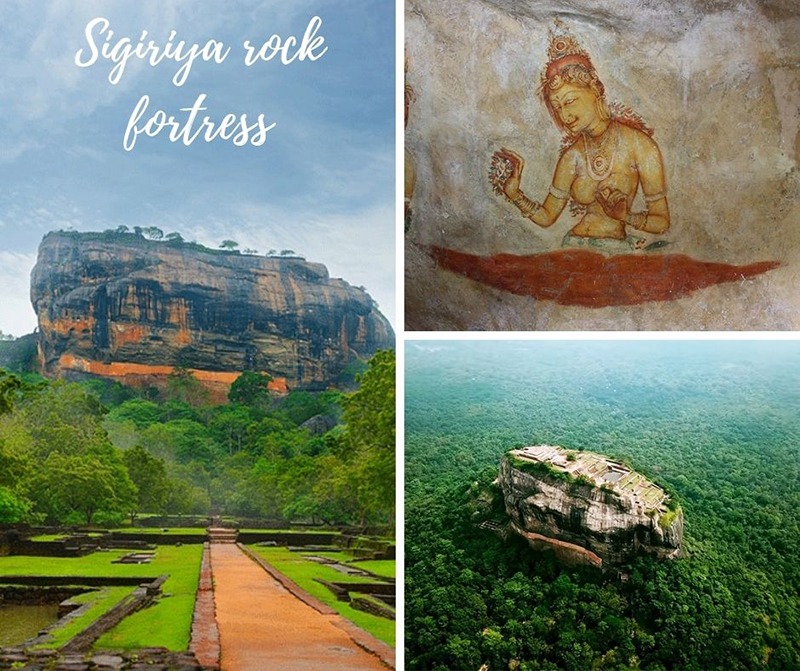
Visit Sri Lanka Sigiriya rock fortress
Sigiriya or Sinhagiri, is an old stone fort situated in the north-central province of Sri Lanka close to the town of Dambulla. It is a site of verifiable and archaeological importance that is overwhelmed by a huge section of stone roughly 180 m (590 ft) high.
As indicated by the old Sri Lankan chronicle the Cūḷavaṃsa, this region was an enormous forest, then after tempests and avalanches it turned into a slope and was chosen by King Kashyapa ( 477-495) for his new capital. He constructed his royal residence on top of the monolithic rock and decorated its sides with beautiful Sigiriya frescoes. On a small plateau about halfway on the eastern side of the rock, he built an entryway as a tremendous lion mouth. The name of this site is gotten from this design; Sīnhāgiri, the Lion Rock.
The capital and the imperial royal residence were deserted after the ruler’s passing. It was utilized as a Buddhist religious community until the fourteenth century. Sigiriya today is a UNESCO World Heritage Site. It is one of the most outstandingly planned urban cities in the ancient world.
Sigiriya graden
Sigiriya is viewed as one of the well-planned urban cities built many thousands of years ago. The planning of the ancient city is thought of as extremely intricate and inventive. The planning of the city is combined with concepts of symmetry and asymmetry to intentionally interlock the man-made geometrical and natural forms of the surroundings.
On the west side of the stone lies a recreation area for the royals, spread out on a balanced arrangement; the recreation area contains water-holding structures, including complex surface/subsurface pressure-driven fountains, some of which are working even today. The southern part of the city contains a man-made reservoir; these were broadly utilized from the past capital of the dry zone of Sri Lanka. Five doors were put at passageways. The more intricate western door is believed to have been saved for the royals.
Sigiriya frescoes
John Still in 1907 expressed, “The entire essence of the slope seems to have been a colossal picture exhibition… the biggest picture on the planet perhaps”. The artworks would take care of the greater part of the western flank of the stone, an area 140 m (460 ft) long and 40 m (130 ft) high. There are references pertaining to 500 women in these works of art. Be that as it may, most have been lost until the end of time. More frescoes, unique in relation to those on the stone face, should be visible somewhere else, for instance on the roof of the area called the “Cobra Hood Cavern”.
Frescos at Sigiriya found at Cobra Hood cave
Albeit the frescoes are created in the Anuradhapura period, the artwork style is considered unique; the line and style of the utilization of the artistic creations contrast from Anuradhapura canvases. The lines are painted in a structure which upgrades the feeling of the volume of the figures. The paint has been applied in clearing strokes, utilizing more strain on one side, giving the impact of a more profound variety tone towards the edge. Different compositions of the Anuradhapura time frame contain comparative ways to deal with painting, however, don’t have the questionable lines of the Sigiriya style, having an unmistakable specialists’ limit line. The genuine personality of the women in these canvases actually has not been affirmed. There are different thoughts regarding their personality. Some accept that they are the women of the King while others believe that they are ladies partaking in strict observances. These frescoes have a nearby likeness to compositions found in the Ajanta Caverns in India.

